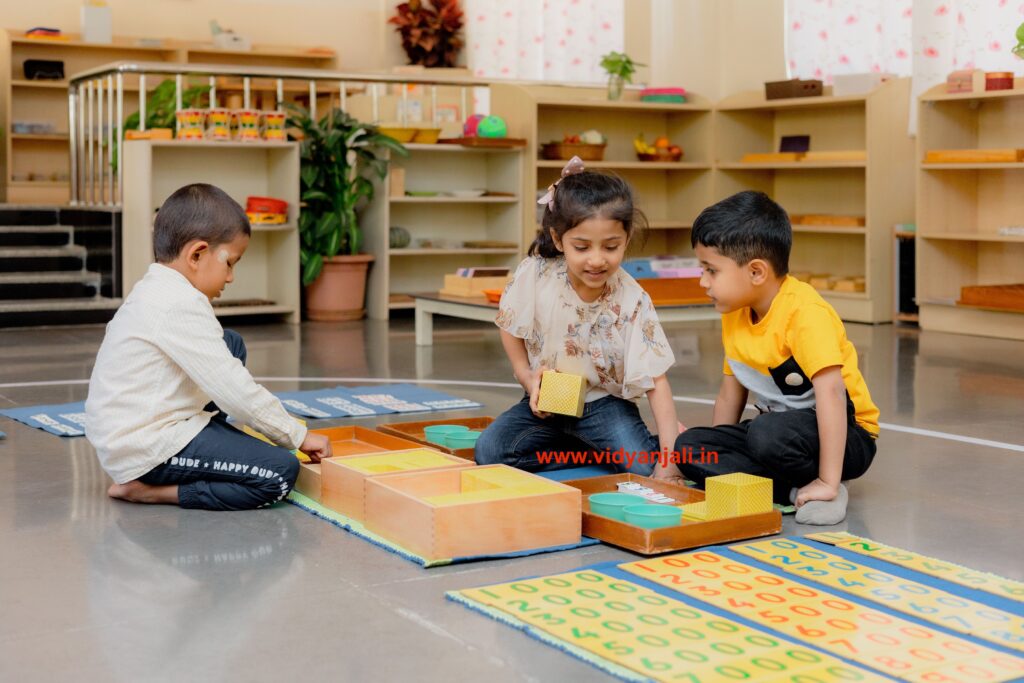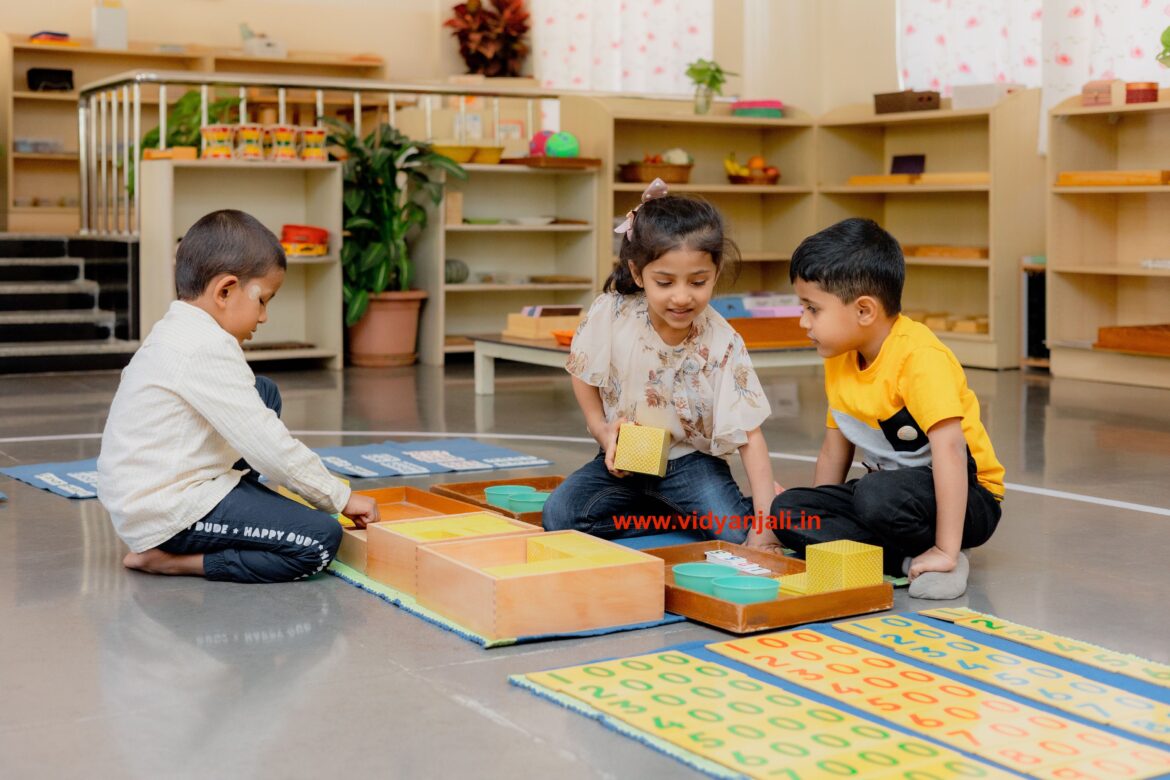Empowering through Group Activities: Montessori’s Holistic Approach to Education

The dictum, “Let me do it myself!” clearly summarizes the philosophy of Montessori education, emphasizing self-directed learning. In a Montessori classroom, particularly in preschool, you will observe children immersed in their individual work, diligently pursuing their tasks independently. This often raises the question of whether any group activities exist in Montessori schools at all.
A group activity involves the participation of more than one student and involves a collaborative learning approach where students join to tackle problems and find solutions. This entails assigning roles, pooling knowledge, offering support and effective communication. These are the skills that foster social development.
Group activities can be initiated by either the children themselves or the teacher. The Montessori classroom provides ample opportunities for group work, fostering social development. The very composition of the Montessori classroom, featuring three mixed-age groups, creates a community of children with varying abilities based on their age, interests and skills at a particular point in time. In this setup, whenever a child faces a problem, other peers readily offer their help. The children who excel in certain activities lend a helping hand to the ones in need. These group interactions occur spontaneously and are not teacher-directed, unlike in regular schools. Similarly, during outdoor play, groups of children naturally devise their own solutions for taking turns or accommodating younger peers.
In addition to these spontaneous group activities, structured group activities are integrated into all areas of the curriculum. For instance, while preparing the Montessori classroom for a collective activity like “Walking on the line”, which requires clearing the space on the painted ellipse on the floor, children collaborate. While some children clear the space, others get the materials needed and arrange them on a table.
In sensorial activities, working with matching Geometric Cards and Geometric Insets requires groups of three children to collaborate and coordinate to complete and enjoy the activity. Similarly, some activities with geometric solids and musical bells are designed for pairs of children, which teaches them taking turns.
In the realm of language education, numerous group activities exist, including initial enrichment of vocabulary exercises, object box activities, and oral phonetic activities. Sometimes, two children collaborate and learn nuances of sentences and punctuation using a sentence box. Command cards are popular group activities where one reads and the other executes the command. Additionally, songs, role plays, and dramas are very much a part of the Montessori classroom.
As children progress to Arithmetic, they engage in a group activity called “Chit Game”. This activity involves each child selecting a chit and collecting as many shells as the number indicated on the chit. Sometimes, the activity presents challenges when the last child is left with either no shells or a lesser number of shells. In such situations, the children collectively address the issue, drawing upon their existing knowledge to devise solutions.
Similarly, in the formation of quantities stage in the Decimal system, the teacher assigns a number to one child, another brings the corresponding quantity from beads, and a third obtains it from cards, making it into a group activity. Furthermore, the introduction of the four arithmetic operations is a group activity, allowing children to gain hands-on experience with larger quantities. Over time, the children transition from primarily working individually to actively engaging in group work, particularly as they reach elementary school.
Group activities in a Montessori classroom are subtle and don’t require the teacher’s constant supervision, as is common in traditional schools. One might overlook these activities if one does not pay close attention. The social development within the classroom is so spontaneous that the entire community intuitively understands its role. Despite limited sets of materials, children respect unspoken rules, patiently waiting for the materials to be returned to their designated places, respecting the spirit of Montessori Class (Montessori, 2016). When child X is anxious about getting a piece of equipment which child Y is working with, instead of snatching it from him, he tries to find a solution. He waits patiently until Y completes his work and helps him to return the material to the display. Sometimes, they bargain and come to some understanding of choosing the next material. This type of spontaneous social development is unique and not commonly observed in other educational settings.
In conclusion, while Montessori philosophy places a strong emphasis on individual development and independence, it also recognizes the child’s role within society as a cultural entity. Consequently, the Montessori classroom offers a diverse range of both spontaneous and teacher-directed group activities, fostering the development of responsible and engaged members of society.

